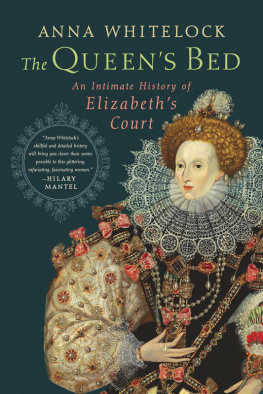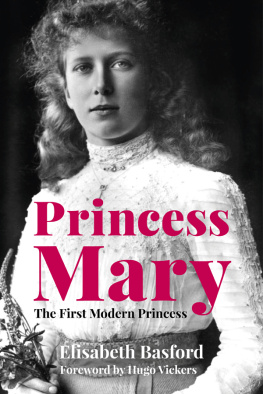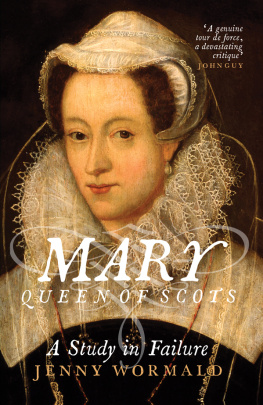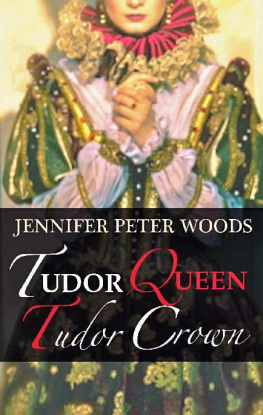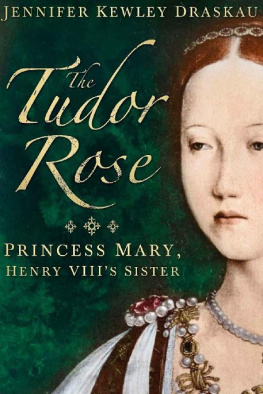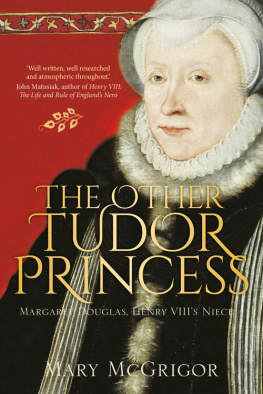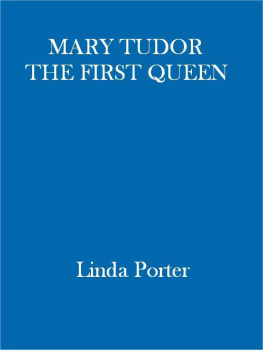Anna Whitelock - Mary Tudor: Princess, Bastard, Queen
Here you can read online Anna Whitelock - Mary Tudor: Princess, Bastard, Queen full text of the book (entire story) in english for free. Download pdf and epub, get meaning, cover and reviews about this ebook. year: 2010, publisher: Random House, genre: Non-fiction. Description of the work, (preface) as well as reviews are available. Best literature library LitArk.com created for fans of good reading and offers a wide selection of genres:
Romance novel
Science fiction
Adventure
Detective
Science
History
Home and family
Prose
Art
Politics
Computer
Non-fiction
Religion
Business
Children
Humor
Choose a favorite category and find really read worthwhile books. Enjoy immersion in the world of imagination, feel the emotions of the characters or learn something new for yourself, make an fascinating discovery.

- Book:Mary Tudor: Princess, Bastard, Queen
- Author:
- Publisher:Random House
- Genre:
- Year:2010
- Rating:3 / 5
- Favourites:Add to favourites
- Your mark:
- 60
- 1
- 2
- 3
- 4
- 5
Mary Tudor: Princess, Bastard, Queen: summary, description and annotation
We offer to read an annotation, description, summary or preface (depends on what the author of the book "Mary Tudor: Princess, Bastard, Queen" wrote himself). If you haven't found the necessary information about the book — write in the comments, we will try to find it.
Mary Tudor: Princess, Bastard, Queen — read online for free the complete book (whole text) full work
Below is the text of the book, divided by pages. System saving the place of the last page read, allows you to conveniently read the book "Mary Tudor: Princess, Bastard, Queen" online for free, without having to search again every time where you left off. Put a bookmark, and you can go to the page where you finished reading at any time.
Font size:
Interval:
Bookmark:
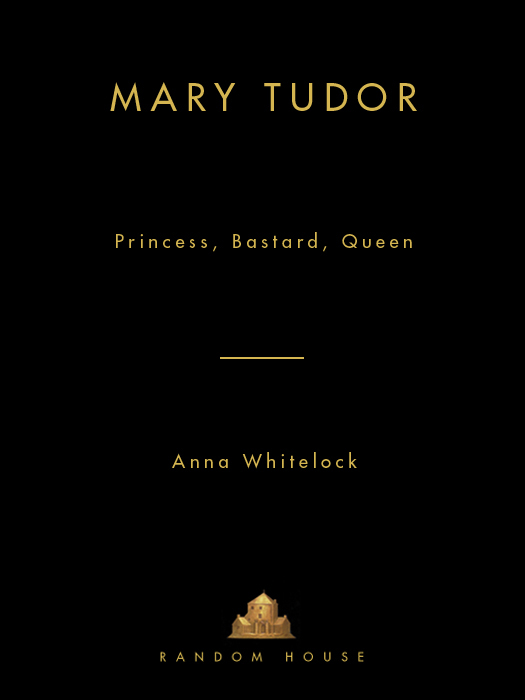
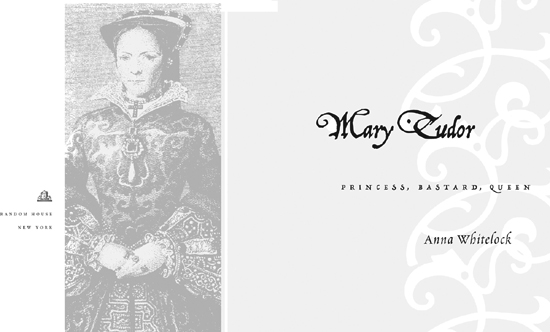
Copyright 2009 by Anna Whitelock
All rights reserved.
Published in the United States by Random House, an imprint of The Random House Publishing Group, a division of Random House, Inc., New York.
Originally published by Bloomsbury, London, in 2009.
R ANDOM H OUSE and colophon are registered trademarks of Random House, Inc.
eISBN: 978-0-679-60398-6
www.atrandom.com
v3.1
For Sam, Lily, and Baillie
SHE WAS A KINGS DAUGHTER ,
SHE WAS A KINGS SISTER ,
SHE WAS A KINGS WIFE .
SHE WAS A QUEEN ,
AND BY THE SAME TITLE A KING ALSO .
John White, bishop of Winchester,
in his sermon at Marys funeral
MARY TUDORS FAMILY TREE


M ARYS REIGN HAS LONG BEEN CONSIDERED A TERRIBLE FOOTNOTE in English history, her reputation dominated by the great Elizabethan work of propaganda, John Foxes Actes and Monuments, which so graphically depicted the horrible and bloudy time of Queene Mary. It is striking that nearly 450 years later Foxes work continues to have a tenacious hold on the popular imagination. Recently this view found dramatic expression in Shekhar Kapurs 1998 film Elizabeth, which portrays the dark, brutal, and barren world of Mary in contrast to the light, liberating accession of Elizabeth. Mary is maligned as a cruel, obstinant Catholic bigot who burned heretics and married an unpopular Spanish prince. As one early biographer concluded, she had a fatal lack of that subtle appeal that awakens popular sympathies.
This book seeks to challenge such popular prejudice and acceptance of Mary as one of the most reviled women in English history; to rebrand her less as the grotesque charicature that is Bloody Mary and more as the groundbreaking first crowned queen of England. In the last ten years or so the gap between academic writing and popular understanding has grown ever wider, and this has spurred my desire to write. Recent scholarship has questioned twentieth-century verdicts of Marys reign as one of sterility and lack of achievements and of Mary as a profoundly conventional woman. A number of important revisions can now be made to the pervasive popular view.
Marys relationship with her mother is key, and Katherine must be understood not as a weak, rejected wife but as a strong, highly accomplished, Yet Katherine of Aragon can be understood as a figure of immense courage from whom Mary could learn much. Katherine oversaw Marys early education and highly formative upbringing, which was not a prelude to inevitable failure but an apprenticeship for rule. Marys Spanish heritage informed her queenship but in a far more positive way than is popularly acknowledged.
Marys very accession was against the odds and is a too commonly overlooked achievement the scale of which is rarely acknowledged. It was, as one contemporary chronicler described, an act of Herculean daring that rarely finds its way into the popular annals. Upon becoming queen, Mary entered a mans world and had to change the nature of politicsher decisions as to how she would rule would become precedents for the future. She gained the throne, maintained her rule, preserved the line of Tudor succession, and set many important precedents for her sister, Elizabeth. Less a victim of the men around her but politically accomplished and at the center of politics, Mary was a woman who in many ways was able to overcome the handicap of her sex. For good or ill, Mary proved to be very much her own woman and a not entirely unsuccessful one at that.
So the Mary of this book is an unfamiliar queen, and hers is an incredibly thrilling and inspirational story. She broke tradition, she challenged precedent; she was a political pioneer who redefined the English monarchy.

I N WESTMINSTER ABBEY, AMID THE CHAOTIC GRANDEUR OF ROYAL tombs, lies the marble effigy of a resplendent Tudor queen. It is a striking, iconic image of Elizabeth I, her successes inscribed for eternal memory in panegyric Latin verses. Each week hundreds of people file through the north aisle of the Chapel of Henry VII, past this monument dedicated to the great Gloriana. Many perhaps fail to notice the Latin inscription on the base of this towering edifice:
Regno consortes et urna, hic obdormimus Elizabetha et Maria sorores, in spe resurrectionis. [Partners both in throne and grave, here rest we two sisters, Elizabeth and Mary, in the hope of one resurrection.]
Elizabeth does not lie alone; she inhabits her elder sisters tomb.
Queen Mary I was buried there on December 14, 1558, with only stones from demolished altars marking the spot where she was laid to rest. When Elizabeth died in 1603, her body was placed in the central vault of the chapel alongside the remains of her grandparents Henry VII and Elizabeth of York. But in 1606, James I ordered that the dead queen be moved. Forty-eight years after Marys death, the stones were cleared from her grave, the vault was reopened, and Elizabeths coffin was placed within. Seeking to legitimize a new dynasty and preserve his status in posterity, James wanted Elizabeths place in Henry VIIs vault for himself.queens would be remembered: Elizabeth magnificent, Mary, her body, as her memory, buried beneath. This book seeks to resurrect the remarkable story of Mary, the first queen of England.

MARYS ACCESSION WAS against the odds. It was, in many ways, emblematic of a life of both fortune and adversity, of both royal favor and profound neglect. Mary was a truly European princess. The heir of the Tudor dynasty in England and a daughter of Spain, she grew up adored at home and feted by courts across Europe. Yet this was a prelude to great personal tragedy. When her parents, Henry VIII and Katherine of Aragon, divorced, Mary, then just seventeen years old, was reduced from a royal princess to a royal bastard. She became the Lady Mary, spurned by her father and superseded in his affections by the infant Elizabeth. For the next three years she defended her mothers honor, refusing to acknowledge her stepmother, Anne Boleyn, as queen or the illegitimacy of her own birth. Mother and daughter were prevented from seeing each other even when Katherine was dying. Mary was threatened with death as a traitor and forced to submit to her fathers authority as supreme head of the English Church. Her submission defined her. From then on she lived according to the dictates of her Catholic conscience, ready to defend her faith at all costs.
Her defiance cast her in opposition to the brother she loved when he became king. Edward VI was determined to enforce a new religious service and outlaw the Mass that Mary held so dear. In repeated confrontations, Edward challenged Mary to submit to his authority, but she proved defiant, even considering flight to the imperial court in Brussels to retain her independence. As Mary refused to capitulate and accept the new Protestant settlement, Edward overturned his fathers will to prevent his sister from inheriting the throne. When Edward died, the Protestant Lady Jane Grey was proclaimed queenthough she would never be crowned and anointedand orders were issued for Marys arrest. Yet Mary fled and eluded capture. Ready to fight for her throne, she mobilized support across East Anglia. In a dramatic coup in the summer of 1553, she mustered her forces at Framlingham Castle in Suffolk and won her rightful throne.
Font size:
Interval:
Bookmark:
Similar books «Mary Tudor: Princess, Bastard, Queen»
Look at similar books to Mary Tudor: Princess, Bastard, Queen. We have selected literature similar in name and meaning in the hope of providing readers with more options to find new, interesting, not yet read works.
Discussion, reviews of the book Mary Tudor: Princess, Bastard, Queen and just readers' own opinions. Leave your comments, write what you think about the work, its meaning or the main characters. Specify what exactly you liked and what you didn't like, and why you think so.

